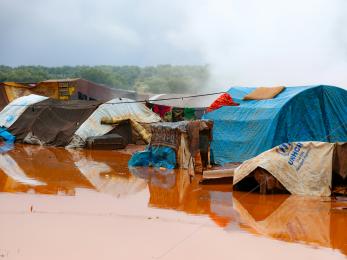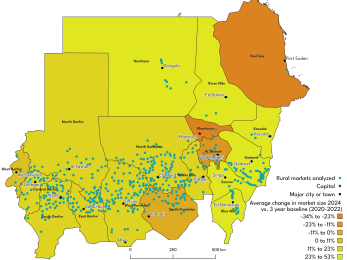Permagarden Foundations Course

About
Throughout the world, households struggle to produce enough food and nutrients. Land degradation, poor soil fertility, little access to water, and a lack of access to inputs all combine to result in consistently low yields for smallholders, and this is exacerbated by climate change and conflict. Food security programs seek solutions to increase the availability, access and use of safe and nutritious food for those suffering from hunger and malnutrition. Often, programs promote home gardens as part of the solution to this problem. However, gardens can only be successful in the longer term if they address key agronomic and ecological issues and are reflective of the needs, desires, and contexts of the communities in which they take root.
The Permagarden Approach is aimed at addressing these issues. It guides users through a design process that ensures gardens work with the environmental conditions present at the garden site and emphasizes core agro-ecological principles, such as building soil health, improving biodiversity, and managing water effectively, as fundamental to increasing garden productivity.
This online course offers an introduction to the Permagarden Approach and provides users with a foundational understanding of key concepts, terms and practices. The course offers supplemental materials, including ‘how to’ documents and videos, as well as homework to support users’ further learning. Users are encouraged to use the supplemental materials to support the successful implementation of a permagarden.
Who is it for?
This course is a key resource for practitioners working with farmers in emergency and early recovery, risk reduction and resilience (ER4) programs to incorporate permagardens into their household growing systems. It is applicable to program staff with a variety of technical backgrounds – including in agriculture, nutrition, health, WASH, protection, infrastructure and natural resource management (NRM) – who are supporting farmers to achieve food security, nutrition and market-related goals. The course can be taken as an individual or with a group and is open to anyone with an interest in learning more about permagardens.
Course Outline
The Permagarden Foundations Course includes 9 sessions, each with related supplemental materials:
- Session 1: What is a Permagarden?
- Session 2: How Permagardens Contribute to Household Resilience
- Session 3: Water Management for Garden Resilience
- Session 4: Building Living Soils
- Session 5: Biodiversity
- Session 6: Developing and Maintaining a Permagarden, Step 1: Observe
- Session 7: Developing and Maintaining a Permagarden, Step 2: Design
- Session 8: Developing and Maintaining a Permagarden, Step 3: Implement
- Session 9: Developing and Maintaining a Permagarden, Step 4: Monitor
Session 1: What is a Permagarden?
Implementing home gardens that can meet the needs of a household even through the dry, hungry season is not easy, particularly when exacerbated by climate change and increasingly erratic rainfalls. This first session of the course will look at the typical challenges encountered in home garden programs and how the Permagarden Approach addresses these. It will also discuss the Permagarden Minimum Standards and why these are important to design and implement successful permagardens.
Session 1 Supplemental Materials
Session 1 Homework
No homework for Session 1.
Session 1 Supplemental Videos:
Palabek refugee camp (Uganda)
- Palabek Refugee Dry Season: This video introduces the work implementing permagardens in Palabek refugee camp, showing the gardens in the camp after several months without rain. Narration by Thomas Cole, Agroecology & Resilience Design Technical Advisor.
Session 2: How Permagardens Contribute to Household Resilience
With climate change exacerbating issues of land degradation, poor soil fertility, and lack of access to water, ‘resilience’ has become an increasingly important concept. In this session we will discuss the concept of resilience, which is often defined as a system’s ability to bounce back from a shock or stress, and how the Permagarden Approach can contribute to the resilience of a household.
Session 2 Supplemental Materials:
No supplemental materials for Session 2.
Session 2 Homework:
No homework for Session 2.
Session 3: Water Management for Garden Resilience
No plant can grow without water. Effective water management is the first building block of the Permagarden Approach. This session will explore how we can capture water and conserve water in the soil for future use. The Permagarden Approach first teaches how to understand the natural flow of rainwater and nutrients across the landscape, and then shows how to build water management systems across the compound to prevent losses from erosion and provide protection from flooding.
Session 3 Supplemental Materials:
- How To: “Walk the Water”
- How To: Build and Calibrate an A-frame
- How To: Construct a Swale
- How To: Construct a Half Moon Berm
- How To: Construct a Mulch Basin
- How To: Do a Rainfall Calculation
Session 3 Homework:
- Do a rainfall calculation for your home (using the “How to” document). How much water could you save in a year?
- Build an A-frame and mark out a contour (using the “How to” document).
- Do a "walk the water" exercise (using the “How to” document).
Session 4: Building Living Soils
Next to water, the secret to a productive garden and more nutritious crops is a healthy, living soil. Building healthy soil is the second building block of the Permagarden Approach. In this session we will explore what makes a soil healthy; one that is full of living organisms, contains a high amount of organic matter, is high in fertility, and is well-structured with pores that retain water and air. Then, we will learn soil management techniques that can rehabilitate degraded soils and protect soil health.
Session 4 Supplemental Materials:
- How To: Conduct a Rapid Soil Test
- How To: Prepare and Amend a Double Dug Bed
- How To: Make a Hot Compost Pile
- How To: Construct a Household Sweepings Pit
- How to: Plant a Biointensive Garden
Session 4 Homework
- Build a compost pile or pit (using the “How to” document).
- Conduct a rapid soil test on various patches of soil (using the “How to” document).
- Do a community walk to observe fertility plants and other sources of fertility (animal wastes, household waste products, etc.) that are present in the landscape. Discuss with community members which plants and other materials they use to enhance soil fertility.
Session 5: Biodiversity
The Permagarden Approach takes its inspiration from nature. An essential element of any ecosystem is a diversity of plants. Biodiversity is the third building block of the Permagarden Approach. In this session we will explore how biodiversity - having many types of trees, shrubs, vines, herbs, vegetables, and animals - not only creates a resilient garden by reducing erosion, preserving topsoil, and adding organic material to soil, but also strengthens household resilience.
Session 5 Supplemental Materials
Session 5 Homework
No homework for Session 5.
Session 6: Developing and Maintaining a Permagarden, Step 1: Observe
The Permagarden Approach is unique from many other home garden approaches in that it focuses on a process rather than a set of techniques. Applying this process ensures that each garden is designed for its specific context and adapted to its climate. The first step in this process is to observe. In this session we will review how observation supports farmers to see how their knowledge and experience will be used to shape the permagarden, and then how their garden can be designed to fit their household goals.
Session 6 Supplemental Materials
Session 6 Homework
- Conduct a resource walk and site assessment at your home or around your community.
- Create a map of a household in your community and include the main structures, water points, external influences, and available resources on the map.
Session 6 Supplemental Videos
Sponge Demonstration
- Sponge Demonstration - Part 1 and Sponge Demonstration - Part 2 (English with French subtitles): Thomas Cole and Warren Brush, Agroecology & Resilience Design Technical Advisors, describe the sponge demonstration activity. This activity demonstrates, at a very small scale, how a permagarden is different from a home garden by showing how each garden would tolerate a heavy rainstorm.
Session 7: Developing and Maintaining a Permagarden, Step 2: Design
The second step in the process is design. In this step, we analyze the observations made in step 1 to develop a design for the permagarden. A permagarden design works with the existing landscape, structures and external influences present on the site, uses locally available resources and helps to achieve the goals of the household. We will see how the building blocks of water management, building living soils, and biodiversity support the design of a climate resilient permagarden. Then, we will see an example of what the design process looks like in practice.
Session 7 Supplemental Materials
Session 7 Homework
- Create a garden design for your compound or a compound in your community.
Session 8: Developing and Maintaining a Permagarden, Step 3: Implement
Implementation of a permagarden comes after having spent time observing and developing a design that will work for the specific context of the household. In this session we will explore some simple steps to implement a permagarden design, while incorporating the learning around the three building blocks of the Permagarden Approach: water, soil, and biodiversity.
Session 8 Supplemental Materials
- How To: Prepare and Amend a Double Dug Bed
- How to: Create a Diverse Garden Using Crop Rotation, Intercropping & Successional Planting
- How To: Apply Mulch
- How To: Construct a Living Fence
- How to: Plant a Biointensive Garden
- How To: Make and Apply Botanical and Manure Teas
- How To: Make and Apply Organic Pesticides
- How To: Construct a Swale
- How To: Construct a Half Moon Berm
- How To: Construct a Mulch Basin
- Fertilizing with Organic Materials for Smallholder Farmers
Session 8 Homework
- If you have the space at home or in your community - implement a permagarden!
Session 9: Developing and Maintaining a Permagarden, Step 4: Monitor
As the permagarden continues to grow each season, there will be successes as well as obstacles and setbacks. An essential part of the Permagarden Approach is learning from these experiences, observing how an intervention succeeded or failed, and adapting to maximize production. In this session we will see how the fourth step, monitor, not only aims to improve the permagarden, but also helps to strengthen the capacity of staff, partners, and households in implementing and adapting permagardens.
Session 9 Supplemental Materials
Session 9 Homework
No homework for Session 9.
Session 9 Supplemental Videos
No videos for Session 9.
Supplemental Materials
Key Terms
How To Guides
- How To: “Walk the Water”
- How To: Build and Calibrate an A-frame
- How To: Construct a Swale
- How To: Construct a Half Moon Berm
- How To: Construct a Mulch Basin
- How To: Do a Rainfall Calculation
- How To: Conduct a Rapid Soil Test
- How To: Prepare and Amend a Double Dug Bed
- How To: Make a Hot Compost Pile
- How To: Construct a Household Sweepings Pit
- How To: Plant a Biointensive Garden
- How To: Create a Diverse Garden Using Crop Rotation, Intercropping and Successional Planting
- How To: Observe (Step 1 of the Permagarden Process)
- How To: Design (Step 2 of the Permagarden Process)
- How To: Apply Mulch
- How To: Construct a Living Fence
- How To: Make and Apply Botanical and Manure Teas
- How To: Make and Apply Organic Pesticides
Quiz
Acknowledgments
This course was developed under the Mercy Corps-led, USAID/Bureau for Humanitarian Assistance (BHA)-funded Strengthening Capacity in Agriculture, Livelihoods & Environment (SCALE) Award. Many people contributed to the development of this course, including Ali Blumenstock, Warren Brush, Thomas Cole, Elin Duby, Kristin Lambert, Abby Love, Jennifer Mayer, Andrea Mottram, William Otoke, Lauren Pincus, and Jonas Rwanika. The course was designed and built by HUB Collective.

